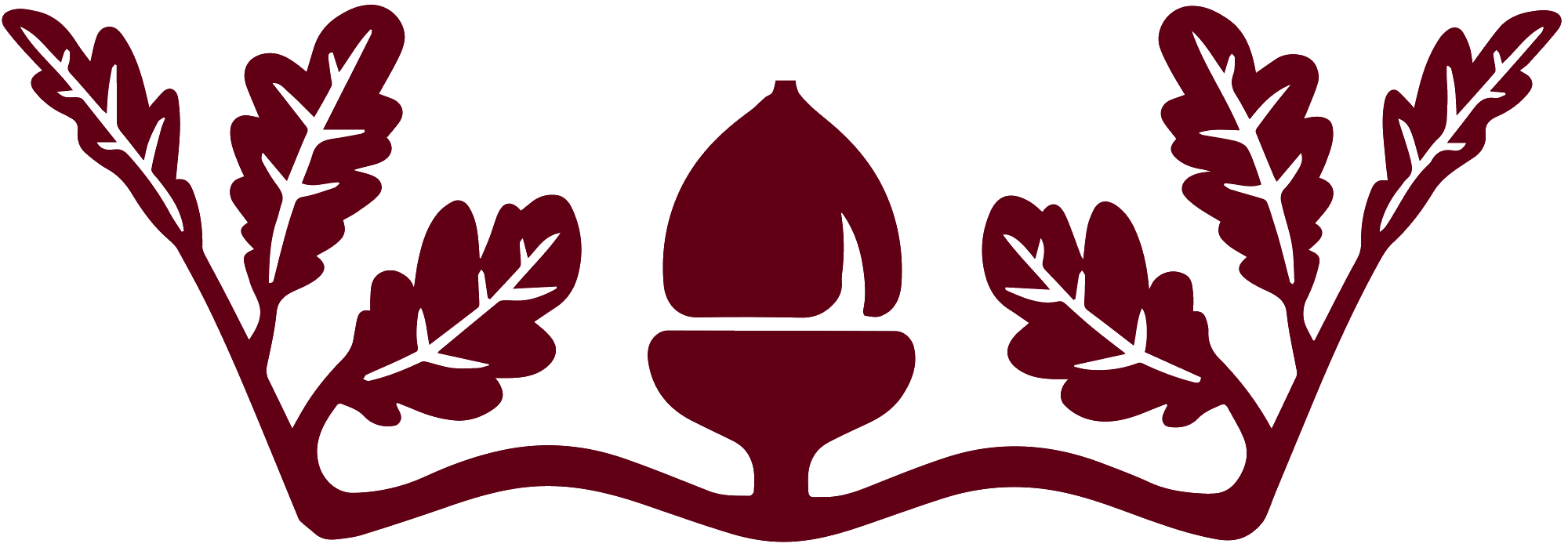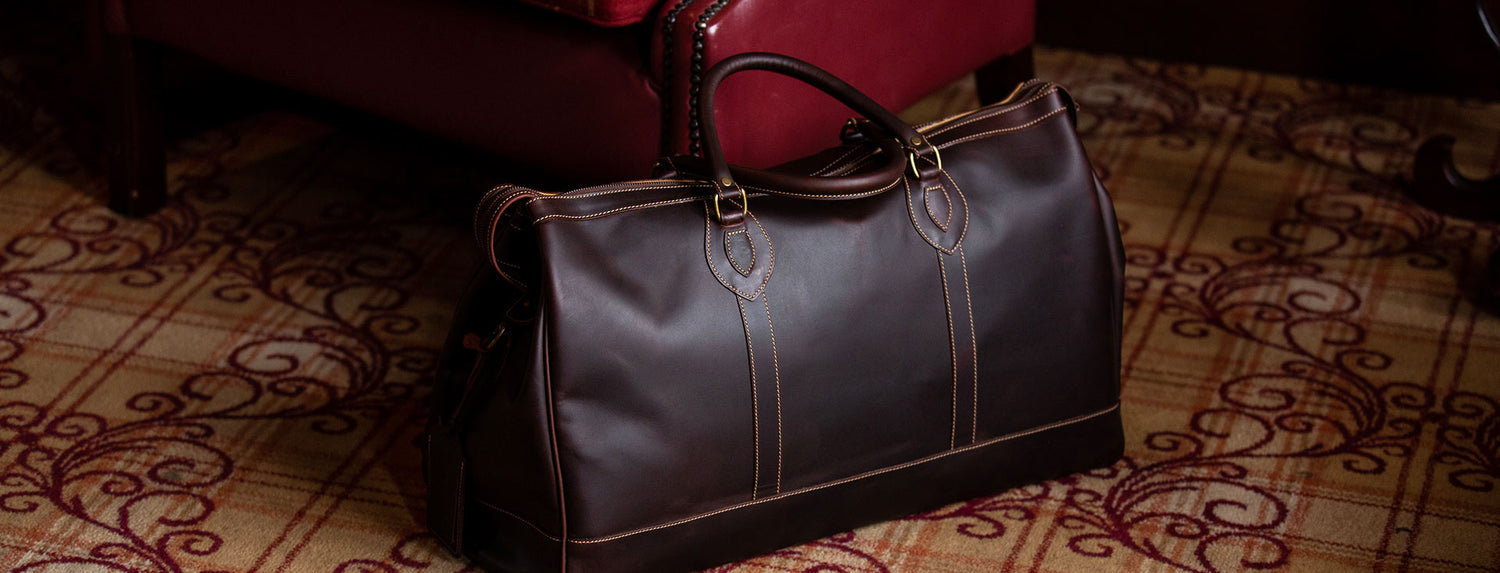CENTURIES-OLD SUSTAINABILITY
Leather and leathergoods have a long history of sustainability. There is a lot we can learn from looking back at a time when there were different things driving sustainability – and when it wasn’t called sustainability…
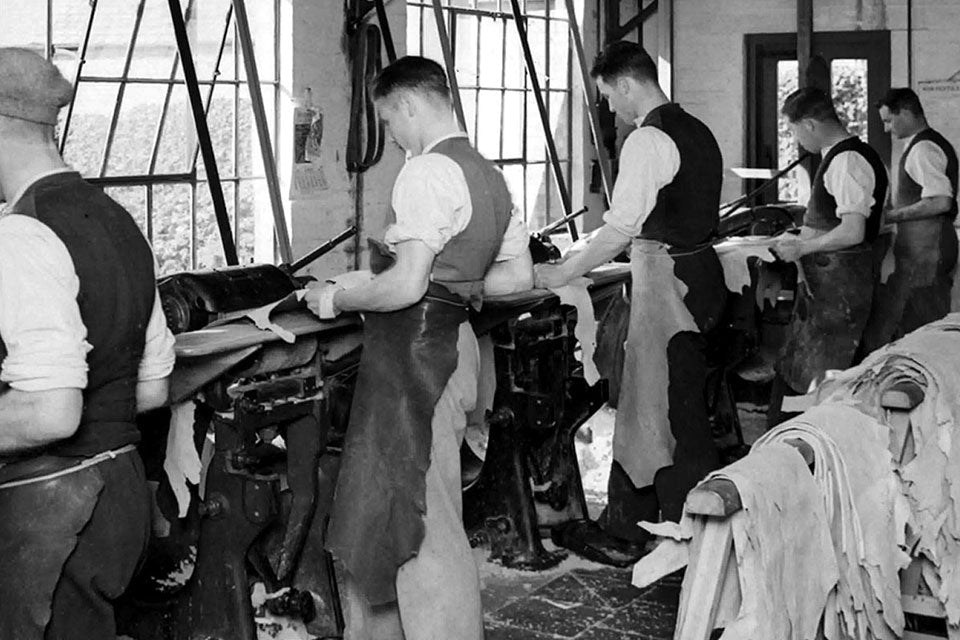
FROM THE VERY BEGINNING...
Leather is one of the oldest materials used by man and comes from a time when the waste of any part of a hunted animal would have been unthinkable. If we consider the effort needed to hunt their prey, making use of every scrap of such a precious resource would be essential for our early forebears, and that included preserving the hide.
Used for clothing, shelter, tools and so much more, our ancestors’ leather was a hugely durable and yet entirely natural material which, when eventually finished with, would biodegrade and return to the soil.
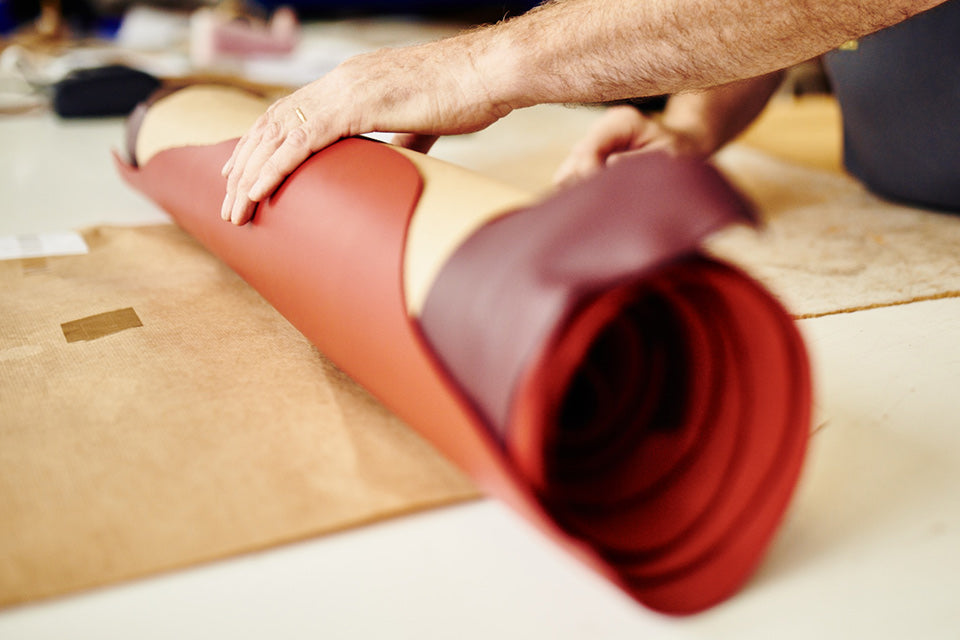
UPCYCLING
Knowledge of a craft is built up over many generations and, along the way, whilst the methods become embedded, the reasons behind them can sometimes become a little lost. We may find ourselves not fully appreciating all the clever things that are part of that craft – this is almost certainly true of leather production.
According to the research of Leather UK (the trade body for leather producers and users in the UK), 99% of hides and skins used in the manufacture of leather are from animals raised for wool, milk or meat. Simply put, making leather takes a problematic waste matter and upcycles it into a sustainable, biodegradable and beautifully versatile product. It is estimated that this saves over nine million tonnes of waste each year.
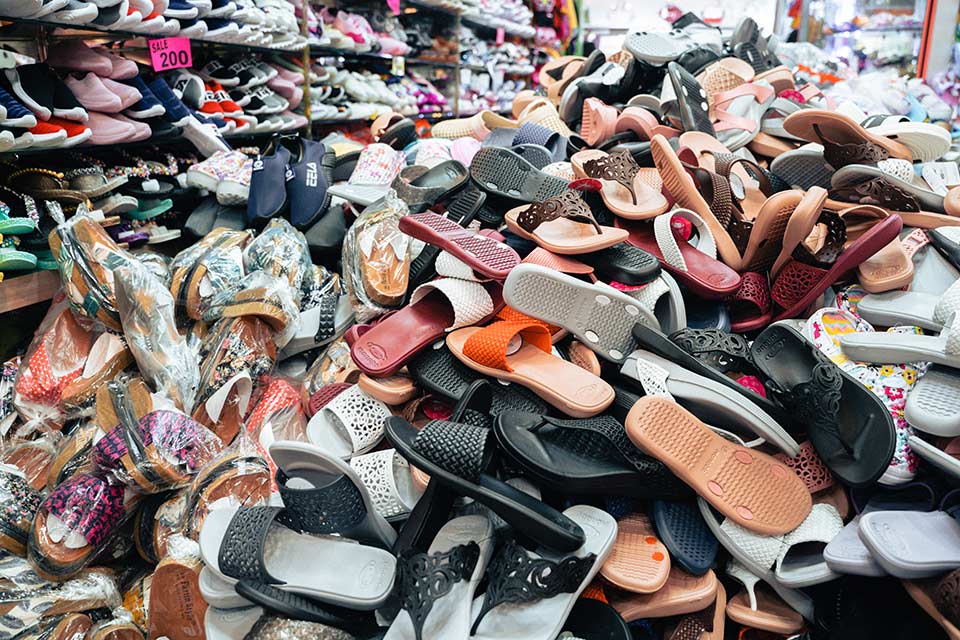
ALTERNATIVES
Knowledge of a craft is built up over many generations and, along the way, whilst the methods become embedded, the reasons behind them can sometimes become a little lost. We may find ourselves not fully appreciating all the clever things that are part of that craft – this is almost certainly true of leather production.
According to the research of Leather UK (the trade body for leather producers and users in the UK), 99% of hides and skins used in the manufacture of leather are from animals raised for wool, milk or meat. Simply put, making leather takes a problematic waste matter and upcycles it into a sustainable, biodegradable and beautifully versatile product. It is estimated that this saves over nine million tonnes of waste each year.
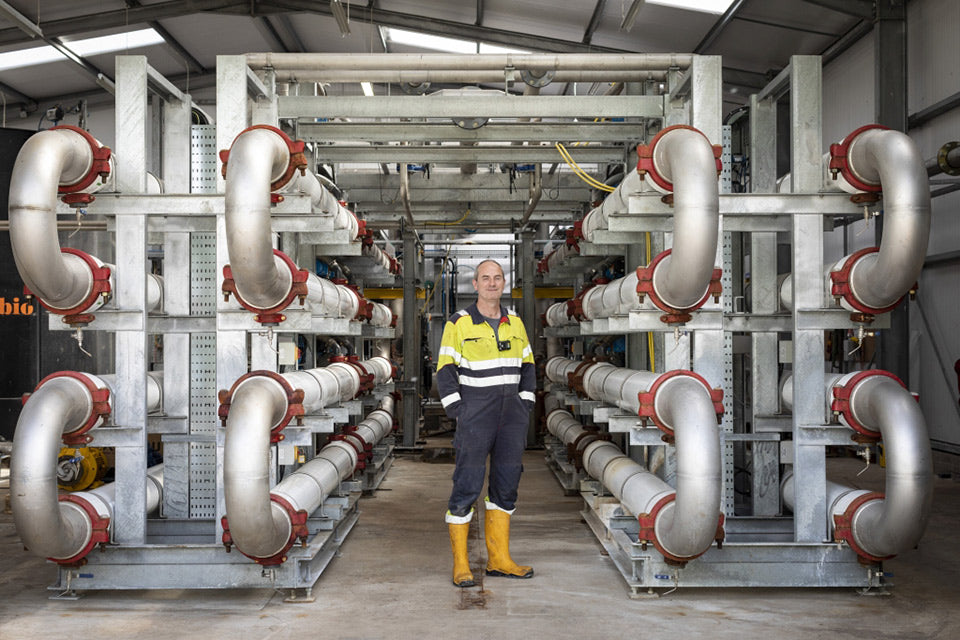
MODERN STANDARDS
Whilst our early ancestors could only use natural methods for preserving hides, the advances brought by the industrial revolution were often very unfriendly to the environment. Fortunately, tanning has since undergone a new revolution and is today tightly regulated with strict traceability rules in place to ensure ethical production from farm to finished product. The benefits of this begin with well-managed herds and flow right through the non-polluting modern tanning techniques. These improvements are ongoing, with huge creative energy continuously applied to furthering the environmental credentials of the leather industry. For a brilliant example of this, check out Scottish Leather Group‘s sustainability work which features a ground-breaking thermal energy plant which captures the energy in their waste.
Tusting benefits from these advances but we also use recycled materials where possible, such as leatherboard, made from recycled waste trimmings of leather, for reinforcement. We actively manage our cutting efficiency in order to drive down the creation of waste and also ensure our packaging is recycled, recyclable and/or reusable as much as possible.
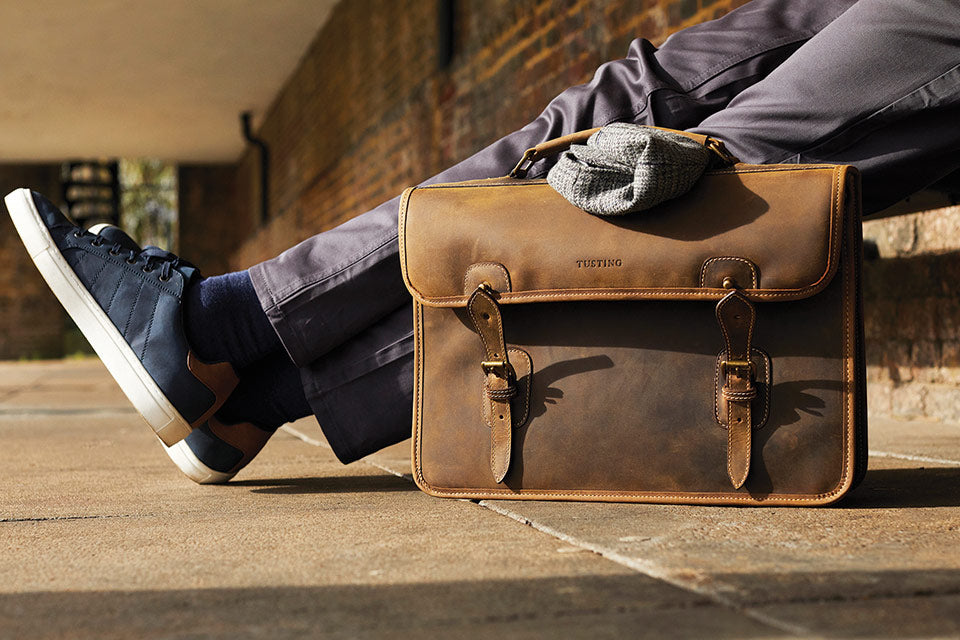
SLOW FASHION & SLOW LIVING
These are new buzz words but ones which encourage us back to a time of less consumption and better decisions. Premium leather accessories are the embodiment of slow fashion, and they have been since long before the term was coined. Put another way, ‘Buy Well, Buy Less’ gives the same message, where the onus is on choosing quality and longevity over something created as cheaply as possible by mass-production and intended to be swiftly discarded.
Poorly made, synthetic goods are sadly the norm right now, their speedy discard rate contributing to mountains of hugely problematic waste. At Tusting, we have always considered that the longer our products last, the better – we expect them, with care, to be good enough to hand on to the next generation. Slow fashion, therefore, requires great attention to designing stylish pieces whose desirability is not at the mercy of a passing trend, but which stand the test of time.
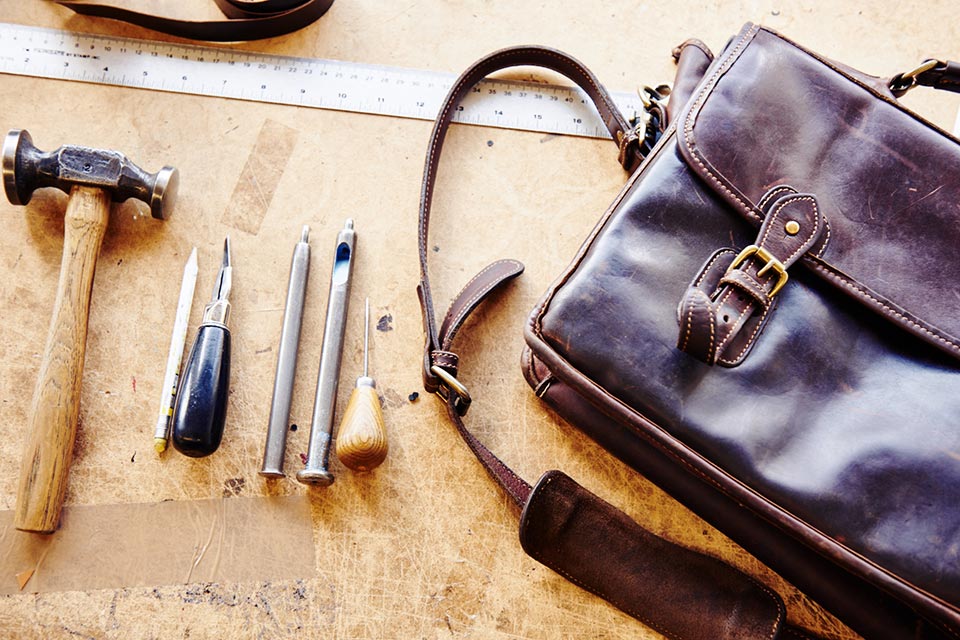
EXTENDING USEFUL LIFE
In other words, repairs. It takes time to repair something that is broken, and unfortunately, the arrival of ever-cheaper (often imported) goods has meant that for the consumer, it can actually be less expensive, and a whole lot easier, to replace an item than to find someone to repair it. This does not help the challenge of reducing waste, especially as those cheap, ‘disposable’ products are often the most polluting.
Once again, the ways of old are found to have wisdom – repairing goods whenever possible is surely the way forward. It’s what we’ve been committed to since we made our first bag, and whilst it doesn’t make us any money (since we keep our charges for repairs to the minimum) it does make us happy, helps our customers and helps the planet.

